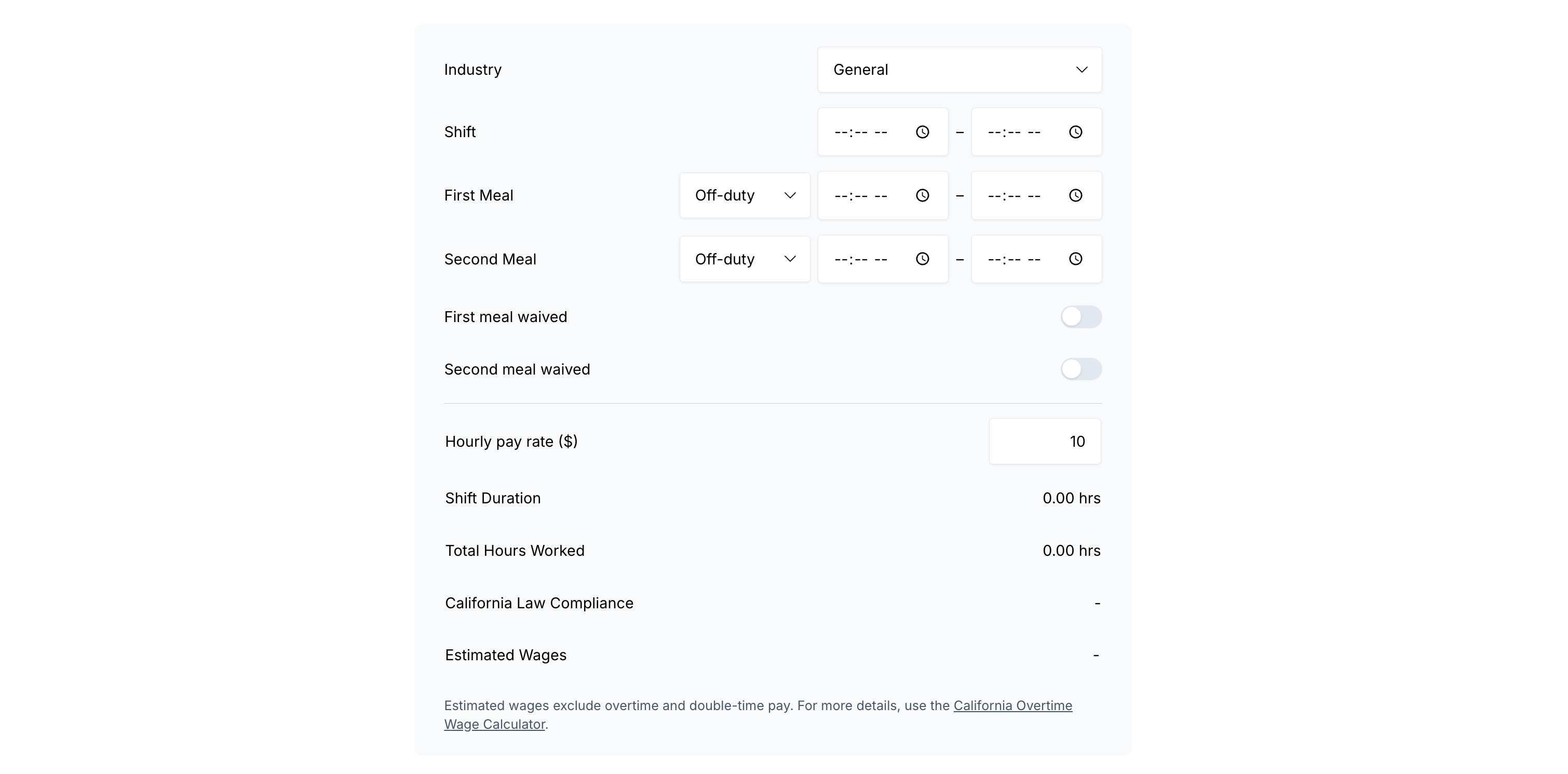Understanding California Meal Break Laws 2025: Rules, Penalties, and Compliance
In 2025, ensuring compliance with California meal break laws remains critical for both employers and employees. These laws are designed to protect workers' rights to rest and recuperation during long shifts, fostering a healthier and more productive workforce. By adhering to meal break regulations, employers not only fulfill their legal obligations but also create a supportive workplace culture that values employee well-being. Non-compliance can lead to costly penalties, strained relationships, and potential legal disputes.
With California’s labor laws often evolving, staying informed about the latest updates is essential. Meal break requirements are particularly stringent, including precise timing rules, waivers under specific conditions, and penalties for missed breaks. In an era of heightened focus on labor rights, understanding and implementing these laws helps businesses avoid violations and ensures employees receive the breaks they are entitled to. Compliance isn’t just a legal necessity—it’s a commitment to fairness and respect in the workplace.

What Are California Meal Break Laws?
California meal break laws are among the most comprehensive in the nation, designed to protect employees' rights and ensure fair working conditions. These laws specify when meal breaks must be provided, how they can be waived, and the penalties employers face for non-compliance. Staying compliant with these regulations is essential for avoiding costly violations and fostering a respectful workplace environment. For a detailed understanding of how to calculate compliance, visit our free California Meal Break Calculator.
Timing Requirements for First and Second Meal Breaks
Under California law, employees must receive a 30-minute unpaid, duty-free meal break if they work more than 5 hours. This break must begin no later than the end of the fifth hour of work. For shifts exceeding 10 hours, employees are entitled to a second 30-minute meal break, which must start no later than the end of the tenth hour. Waivers are allowed under specific conditions, such as when the total shift is 6 hours or less for the first meal or 12 hours or less for the second. To learn more about these requirements, review California Labor Code Section 512.
Unpaid vs. Paid Meal Breaks
In California, meal breaks are generally unpaid as long as employees are completely relieved of their duties and free to leave the premises. However, if the nature of the work makes it impossible for employees to take a duty-free break, an on-duty meal break may be allowed. On-duty meal breaks must be paid and require a written agreement between the employer and employee. This agreement must explicitly state that the employee can revoke their consent at any time. To learn more about the specific requirements for on-duty meal breaks, consult the Industrial Welfare Commission Wage Orders, which detail California’s labor regulations across various industries.
Meal Break Waivers and Conditions
California meal break laws allow waivers under specific conditions, but these must be voluntary and mutual between the employer and employee. Waivers cannot be imposed, and strict rules dictate when they can apply. Proper documentation and understanding of these conditions are essential to avoid violations.
When Can the First Meal Break Be Waived?
The first meal break can only be waived if the total shift duration is 6 hours or less. This requires mutual agreement between the employer and employee, ensuring both parties consent voluntarily. Employers cannot pressure employees into waiving their right to a meal break. For more details, refer to California Labor Code Section 512.
When Can the Second Meal Break Be Waived?
The second meal break can be waived if the total shift duration is 12 hours or less, but only if the first meal break was not waived. This ensures that employees working longer shifts still receive adequate rest. Both the first and second waivers require mutual consent, and the employee must always retain the right to revoke their agreement. Official guidelines on meal break waivers can be found on the California Department of Industrial Relations website.
Penalties for Non-Compliance
Failure to comply with California meal break laws can result in significant financial penalties for employers. These penalties are designed to compensate employees for missed or inadequate meal breaks and to encourage strict adherence to labor regulations. Understanding these penalties and the most common compliance issues can help employers avoid costly mistakes.
Meal Break Premium Explained
If an employer fails to provide a required meal break, they must pay the employee one additional hour of pay at their regular rate for each workday the break was missed or non-compliant. This payment, known as the meal break premium, compensates employees for the inconvenience and ensures employers take their obligations seriously. The premium pay is separate from overtime calculations and does not count toward total hours worked for overtime purposes.
Common Violations Employers Should Avoid
Some of the most common violations include failing to provide a meal break before the end of the fifth or tenth hour, requiring employees to work through their breaks without proper pay, and improperly waiving meal breaks without mutual agreement. Employers often overlook documenting meal waivers or fail to understand that short or interrupted meal breaks do not satisfy compliance requirements. Consistently monitoring shift schedules and ensuring proper break timing, with a tool like Timewave, can help avoid these issues.
Staying Compliant in 2025
With California’s meal break laws becoming increasingly scrutinized, compliance is essential for employers aiming to avoid costly penalties and maintain a fair workplace. Understanding and implementing the right policies ensures that employees receive the breaks they’re entitled to while protecting businesses from legal risks. By staying proactive, employers can navigate the complexities of compliance efficiently.
Practical Tips for Employers
Employers can take several steps to stay compliant with California meal break laws. These include scheduling shifts to allow breaks before the end of the fifth and tenth work hours, maintaining proper documentation for any meal break waivers, and regularly reviewing time records for compliance. Training managers on labor laws and implementing systems to track breaks automatically can also minimize violations. Clear communication with employees about their rights and expectations is key to fostering mutual understanding and reducing disputes.
How the California Meal Break Calculator Can Help
The California Meal Break Calculator is designed to help employers and employees ensure compliance with California’s strict meal break laws. By entering shift details, you can quickly determine if breaks were provided at the correct times, whether they meet duration requirements, and if waivers are valid. The tool also calculates penalties for missed breaks, making it easier to address potential violations. Use the California Meal Break Calculator to streamline compliance checks and reduce the risk of costly errors.

Understanding Meal Break Laws Is Essential
Understanding California’s meal break laws is critical for fostering a compliant, fair, and productive workplace. These laws protect employees’ rights while helping employers avoid costly penalties and maintain a positive work environment. Staying informed and implementing proper practices ensures both legal compliance and a better overall workplace culture.
Using tools and software platforms like Timewave makes staying compliant easier and more cost-effective. By automating meal break tracking and compliance checks, Timewave helps you prevent violations and avoid the penalties that can quickly add up. It’s a smarter and more affordable solution compared to facing the risks of non-compliance. You can get started for free by creating an account for your business now.